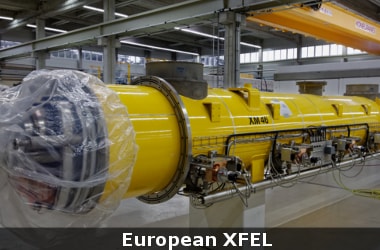
The world’s biggest X-ray laser has generated its first beam of light, that will allow scientists to get a glimpse of new materials, drugs and chemical reactions at the atomic level.
The 3.4-kilometre-long European XFEL, most of which is located in underground tunnels in Germany, will usher a new era of European research, according to scientists.
The biggest X-ray light has a wavelength of 0.8 nanometre - about 500 times shorter than that of visible light.
At first lasing, the laser had a repetition rate of one pulse per second, which will later increase to 27,000 per second.
The achievable laser light wavelength corresponds to the size of an atom, meaning that the X-rays can be used to make pictures and films of the nanocosmos at atomic resolution - such as of biomolecules, from which better understanding of the basis of illnesses or the development of new therapies could be developed.
The facility, to which many countries around the world contributed know-how and components, has passed its first big test with flying colours.
Scientists can now begin to direct the X-ray flashes with special mirrors through the last tunnel section into the experiment hall, and then step by step start the commissioning of the experiment stations.
The first laser light produced today with the most advanced and most powerful linear accelerator in the world marks the beginning a new era of research in Europe.
The European XFEL will provide scientists with the most detailed images of the molecular structure of new materials and drugs and novel live recordings of biochemical reactions.
The facility will enable research into chemical processes and catalytic techniques, with the goal of improving their efficiency or making them more environmentally friendly; materials research; or the investigation of conditions similar to the interior of planets.
The X-ray laser light of the European XFEL was generated from an electron beam from a superconducting linear accelerator, the key component of the X-ray laser.